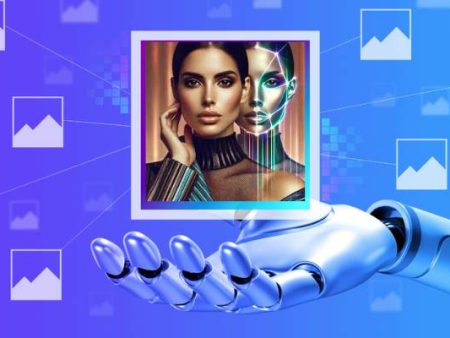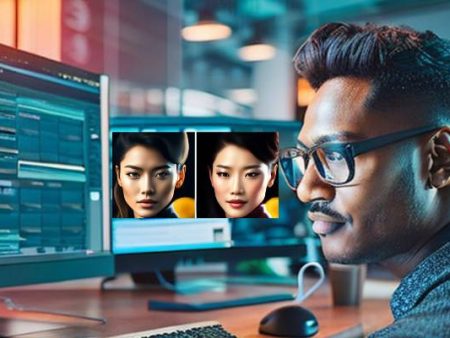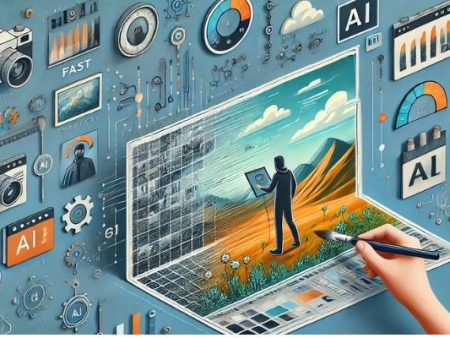If you’ve ever stared at a piece of concept art from a favorite movie or video game, you know the feeling—it’s like glimpsing a world before it exists.
A single drawing can capture mood, atmosphere, and story all at once. Concept art is often where cinematic universes and epic games are born.
But here’s the question people are asking now: what happens when AI enters that creative process? Does it amplify human imagination or edge it out?
The conversation is heating up because AI image generation isn’t a fringe experiment anymore—it’s becoming part of mainstream production. And depending on who you ask, that’s either thrilling or deeply unsettling.
I want to explore both sides, because the truth isn’t simple. AI tools are undeniably changing the creative pipeline, but how we choose to use them will determine whether this shift empowers artists or reduces them to prompt operators.
Why the Role of AI Matters
Let’s start with the obvious: why the role of AI matters in concept art isn’t just about speed. It’s about possibility.
AI tools like MidJourney, Stable Diffusion, and DALL·E can generate dozens of ideas in minutes. Directors, game designers, or art leads no longer need to wait days for initial sketches.
They can brainstorm visually in real time, shifting settings, color palettes, or character aesthetics instantly.
In an industry where deadlines are brutal and budgets are tight, that’s huge. According to a PwC report, AI could contribute up to $15.7 trillion to the global economy by 2030, with a large chunk tied to productivity.
In entertainment, that productivity means studios can prototype faster and cheaper, freeing resources for refinement later.
But speed doesn’t automatically equal better. The question is whether this efficiency enriches creativity—or flattens it.
The Old Way: Craft, Sweat, and Sketchbooks
Before AI, concept art was labor-intensive. Studios hired teams of artists to sketch environments, characters, and props by hand (digitally or on paper). It wasn’t just about making pretty pictures—it was about exploring story.
A concept artist might do fifty iterations of a single character, tweaking subtle details like costume design or facial expression.
These sketches often bore the fingerprints of the artist—quirks, experiments, even mistakes—that sometimes led to breakthroughs.
When AI generates twenty polished versions in a second, it’s tempting to think the old method is obsolete.
But that perspective misses something important: the thinking embedded in those hand-drawn iterations. AI doesn’t yet understand narrative context.
It can mimic style, but it can’t anticipate how a character’s costume might foreshadow their arc, or how a landscape’s tone might influence emotional pacing.
Debate on How AI Is Making the Process Faster
Now, here’s where the debate on how AI is making waves.
On one side, proponents argue AI is democratizing concept art. Indie filmmakers and small game studios—who could never afford big art teams—suddenly have access to stunning visuals. With a few prompts, they can create cinematic mood boards that rival major studios.
On the other side, critics warn this “fast food” approach to art strips away depth. Sure, AI speeds things up.
But when everything is polished from the start, where’s the messy exploration, the happy accidents, the raw discovery that happens in the sketching phase?
I’ve heard artists say it feels like skipping chapters in a book—yes, you reach the ending faster, but you lose the journey that gives it meaning. And I think they have a point.
Issues With Models to AI-Designed Outfits
Character design is one area where this gets especially tricky. Studios are experimenting with generating costumes and characters using AI—sometimes even bypassing live model shoots. But there are issues with models to AI-designed outfits that can’t be ignored.
- Representation: AI tools trained on biased datasets can reinforce stereotypes, producing narrow beauty standards or cultural inaccuracies.
- Practicality: An AI can design a jaw-dropping costume, but it might be physically impossible to build, let alone animate realistically in a game engine.
- Labor: Real models, stylists, and designers risk being sidelined if virtual replacements become the norm.
Fashion and costume design aren’t just about appearance—they’re about how fabric moves, how outfits reflect personality, how actors inhabit roles. AI can propose ideas, but humans still ground them in reality.
Guide to AI-Powered Retouching: Goodbye To the Old Pipeline?
Another hot-button topic is post-production. With AI tools entering editing suites, some wonder if this is a guide to AI-powered retouching: goodbye to traditional pipelines.
Visual effects teams used to spend weeks cleaning up frames, adjusting lighting, or refining textures.
Now AI can automate much of that instantly. For films and games with hundreds of assets, that’s a game changer.
But “goodbye” might be too harsh. Instead of eliminating jobs, AI may just shift them. Instead of manually fixing dust or rendering shadows, artists will spend more time on higher-level creative choices.
Still, it’s a real concern—entry-level jobs are often the first to be automated, and those roles historically served as stepping stones into the industry.
Emotional Resonance: Can AI Capture Mood?
Let’s pause on the technical side and talk feelings. Because at its core, concept art isn’t just technical—it’s emotional. It’s about setting a tone that audiences will carry through an entire story.
Can AI do that? Sometimes yes, sometimes no.
I’ve seen AI-generated landscapes that gave me chills—moody skies, haunting ruins, surreal architecture. But after a few seconds, I realized they felt hollow. Beautiful, yes. Evocative, sure.
But lacking story. AI nails atmosphere, but often struggles with coherence. It’s the difference between a painting that makes you wonder who lives in that castle versus one that just looks “cool.”
That’s why human artists still matter. They imbue mood with narrative weight, something AI can’t feel.
Industry Perspectives
Studios are already experimenting. Netflix has tested AI for background art in anime production. Game studios use AI to generate environmental prototypes. According to Statista, 27% of U.S. adults had tried text-to-image tools by 2023, which means the creative pool of people experimenting is vast.
But major companies are cautious. Legal battles over copyright and dataset usage loom large. No studio wants to be accused of stealing from artists. Until regulations catch up, widespread adoption will remain experimental.
The Human Element: Why Artists Still Matter
Here’s where I land. AI isn’t replacing concept artists—it’s reshaping their role. Artists who adapt will become directors of AI, guiding it with prompts, editing outputs, and weaving context into raw visuals.
It’s a shift from maker to orchestrator. But that doesn’t devalue the craft. If anything, it makes the human touch more important.
Without context, AI art is just decoration. With context, guided by human vision, it becomes storytelling.
And storytelling has always been the heart of movies and games.
Challenges We Can’t Ignore
- Ethics: If AI art is trained on copyrighted works, who owns the result?
- Jobs: Will junior artists lose their footing in an industry already notorious for crunch culture?
- Homogenization: Will everything start to look the same if studios rely too heavily on the same AI models?
These aren’t minor concerns. They’ll define whether AI empowers creativity or flattens it.
Conclusion: A Future of Collaboration
So, how are AI tools redefining concept art for movies and games? They’re speeding up workflows, democratizing access, and expanding imagination.
But they’re also raising ethical dilemmas, labor concerns, and artistic debates that we can’t ignore.
The truth is, AI isn’t a replacement—it’s a collaborator. And like any collaborator, its value depends on how we work with it. If we treat AI as the artist, we risk losing the soul of storytelling. If we treat AI as a tool, guided by human vision, it could open creative horizons we’ve only dreamed of.
And that’s where my hope lies. That artists, not algorithms, will remain at the center of the creative process. That concept art will continue to tell stories, not just generate pretty images.
That the magic of movies and games will still come from human imagination—even if it’s amplified by machine learning.


